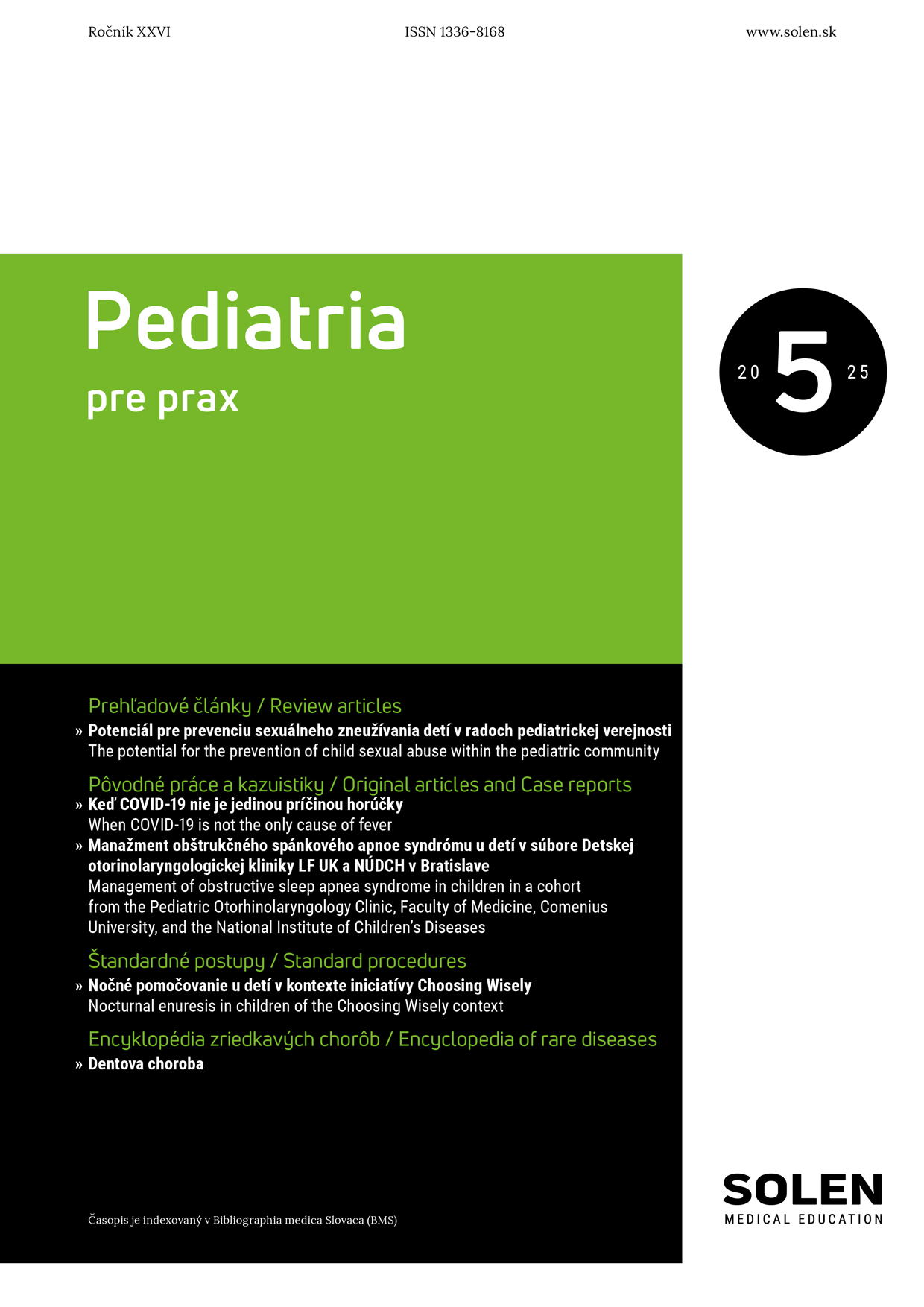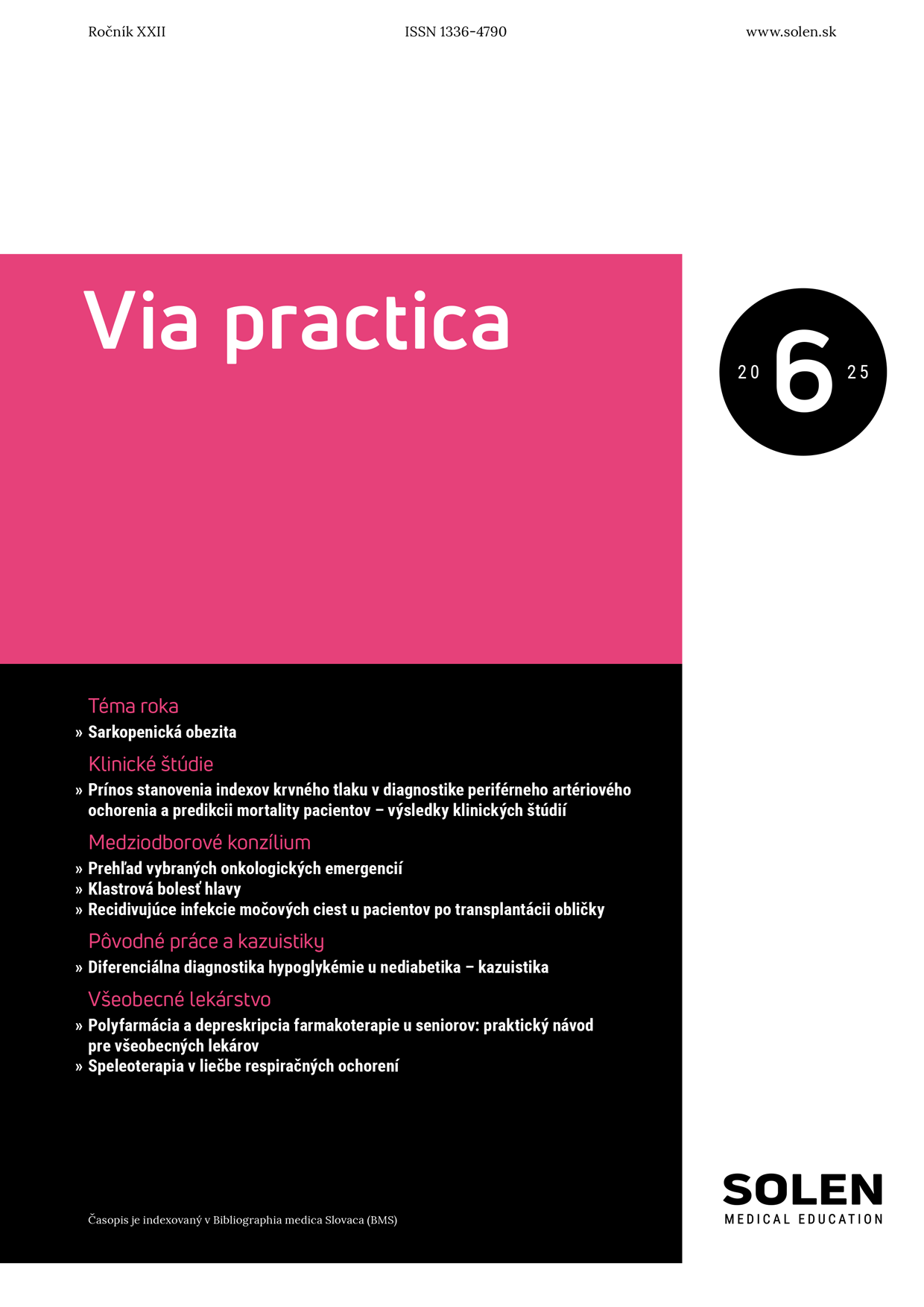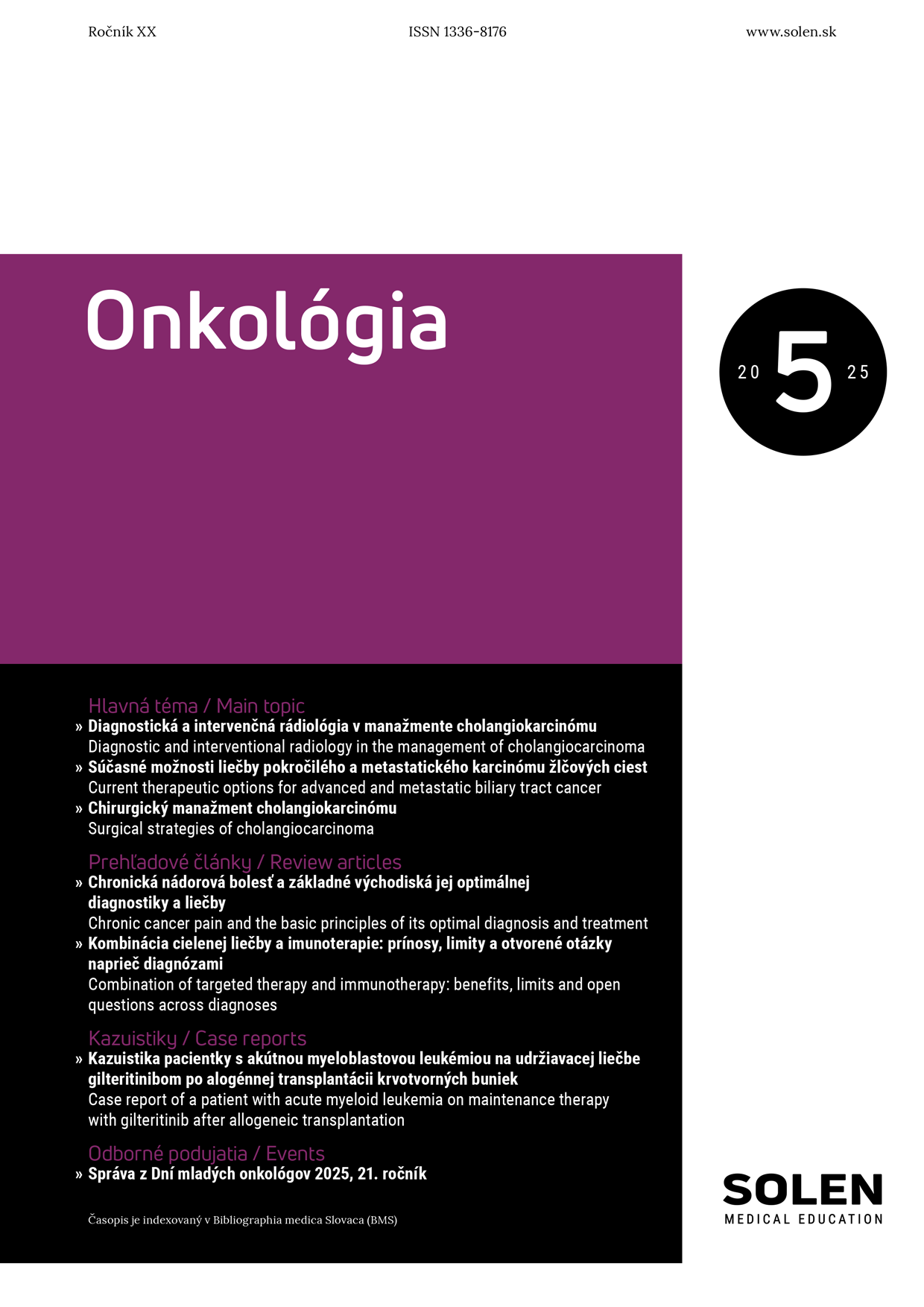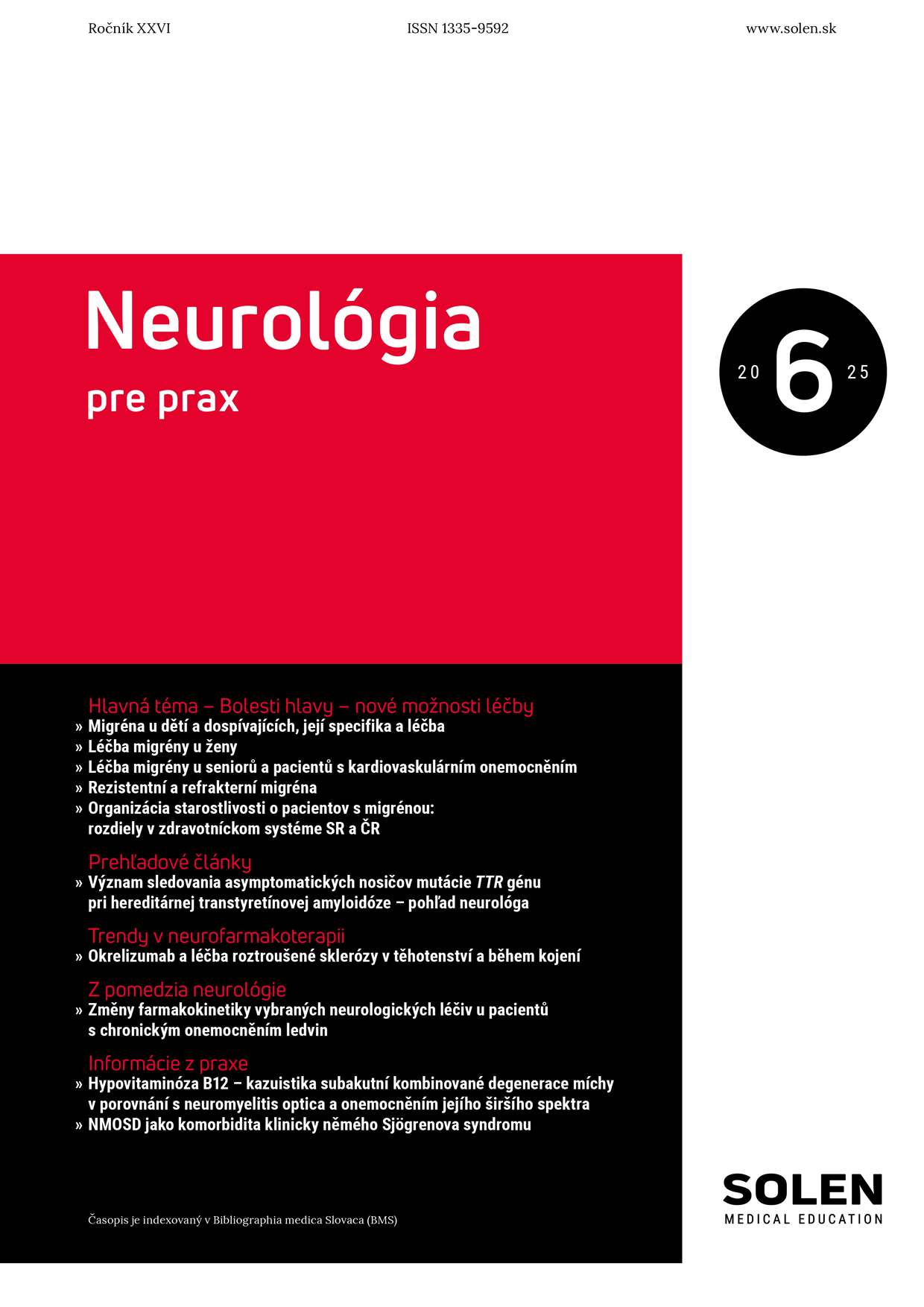Neurológia pre prax 4/2014
The incidence, prevention and treatment of decrease BMD and fractures in patients with Duchenne muscular dystrophy
Osteoporosis and increased fracture rate are serious and frequent complications in patients with DMD. Despite prolonged ambulation with corticosteroid treatment, its use is considered, in addition to muscular weakness, a risk factor for osteoporosis in DMD patients. BMD, as assessed by DXA, is a useful tool for monitoring bone health. BMD result should be always adjusted to patient’s height. Vertebral compressions need to be verified by lateral radiographs of the spine. Prolonged ambulation, alternate corticosteroid use, securing normal serum calcium and vitamin D levels are among the preventive measures to reduce the osteoporosis risk. Bisphosphonates are reserved only for treatment of clinically significant fractures. New promises for osteoporosis therapy in DMD patients represent the anti-IL6 agents or vibration platforms. The controlled prospective studies are needed to find an optimal corticosteroid treatment scheme and a highly sensitive fracture predictors.
Keywords: Duchenne muscular dystrophy, corticosteroids, bone density, osteoporosis, fracture.

















